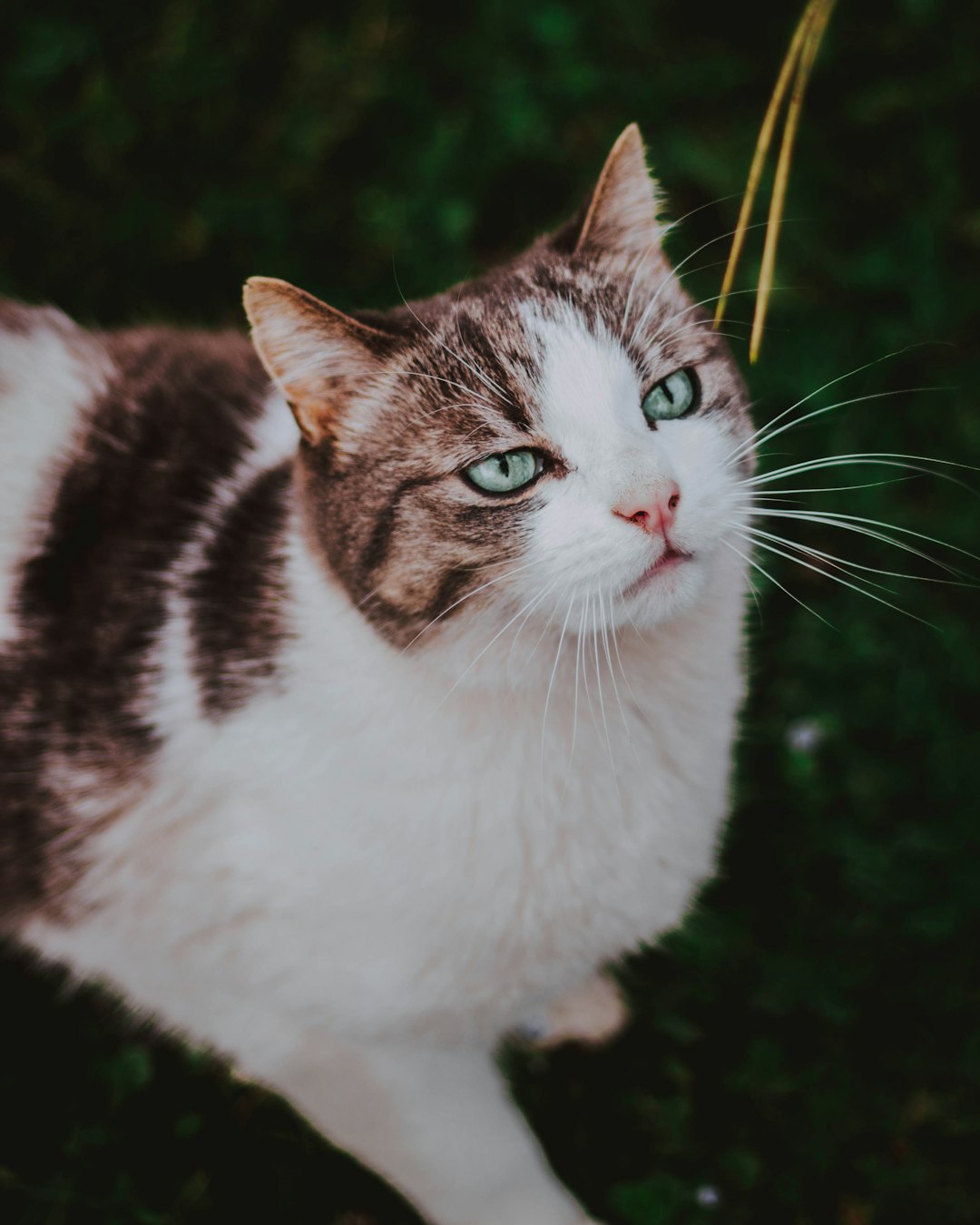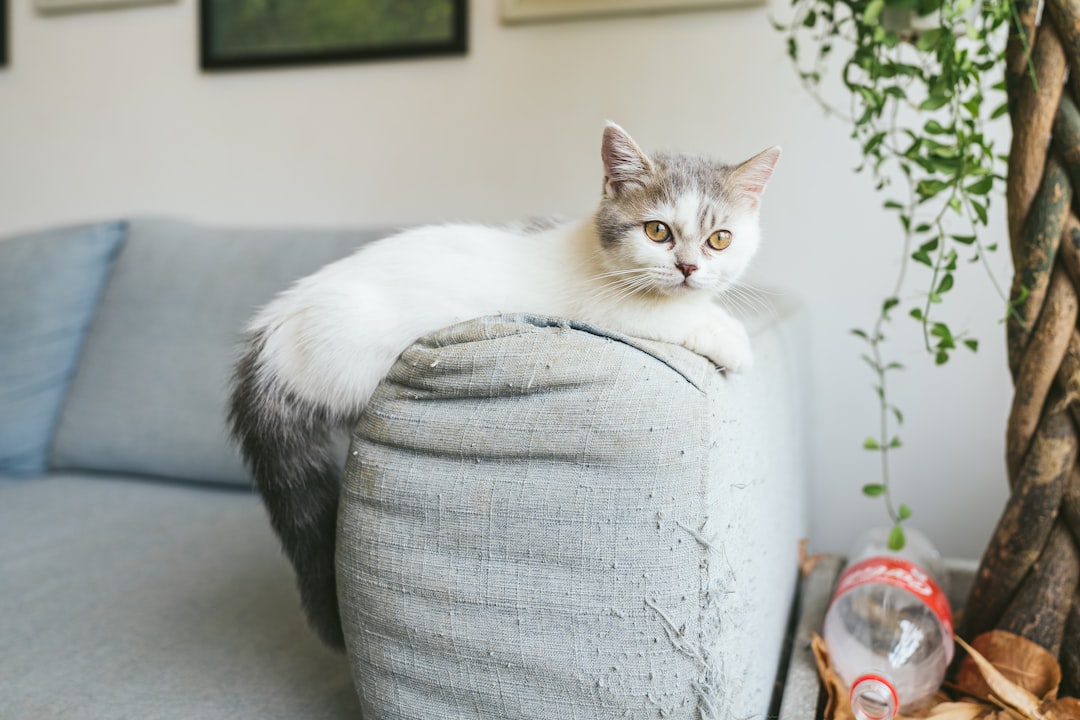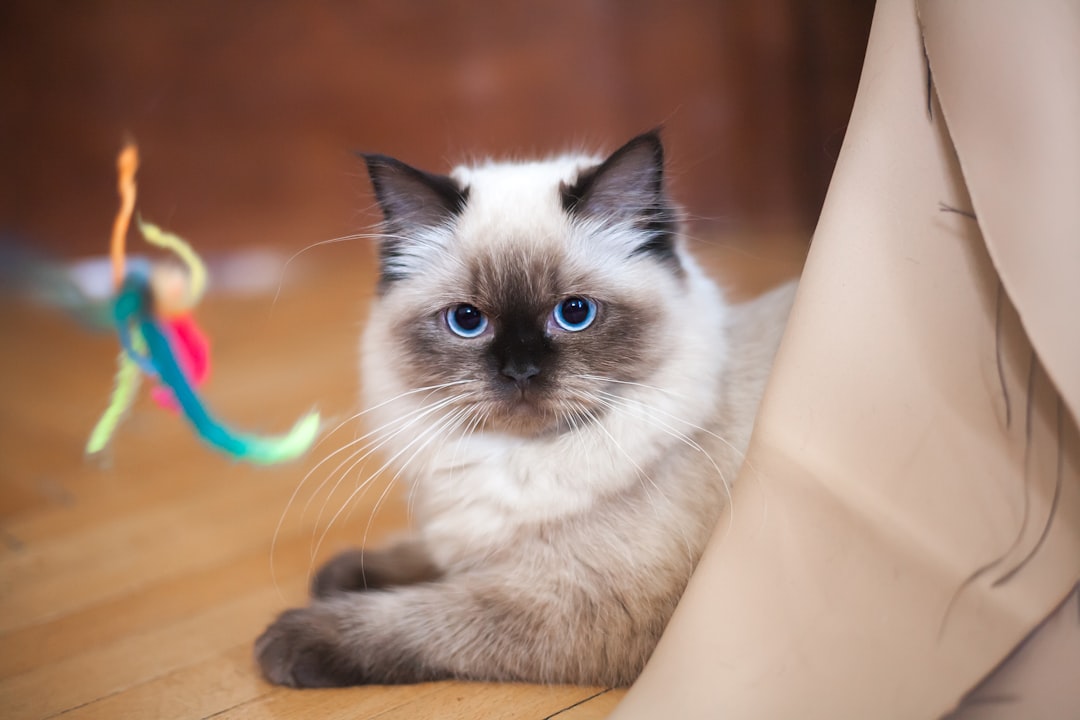Living with a cat that experiences chronic pain can be a heartbreaking challenge for any pet owner. Understanding the signs and symptoms of discomfort is essential, as timely intervention can significantly enhance your feline friend’s quality of life. Managing chronic pain for cats requires a multifaceted approach, including medication, nutritional support, and a nurturing environment. By identifying the root causes of your cat’s pain and implementing effective strategies, you can help them regain mobility and joy. This blog post will explore various methods to alleviate chronic pain in felines, ensuring a more comfortable and fulfilling life for your beloved companion.
Understanding Chronic Pain in Cats
Chronic pain in cats is a significant issue that often goes unnoticed. As a cat owner, understanding this condition can empower you to provide better care and improve your feline’s quality of life.
Common Causes of Chronic Pain
Chronic pain can arise from various sources. Some common causes include:
- Arthritis: Joint inflammation often seen in older cats.
- Injury or Trauma: A previous injury that may not have healed properly.
- Dental Disease: Painful dental issues can contribute significantly to discomfort.
- Cancer: Tumors can lead to persistent pain in cats.
Signs and Symptoms of Pain in Cats
Recognizing the signs of chronic pain is crucial for proper management. Watch out for these symptoms:
- Decreased Activity: Reluctance to play or move around.
- Changes in Eating Habits: Loss of appetite or avoidance of certain foods.
- Vocalization: Increased whining or crying, especially when moving.
- Hiding or Isolation: Seeking solitude more often than usual.
How Chronic Pain Affects Feline Behavior
Chronic pain significantly impacts a cat’s behavior and overall well-being. Cats may exhibit:
- Irritability: Increased aggression or sensitivity to touch.
- Lethargy: Reduced interaction with humans or other pets.
- Altered Grooming Habits: Over-grooming or neglecting to groom, resulting in matted fur.
Understanding these aspects of chronic pain in cats is vital for identifying when your pet may be suffering and ensuring they receive appropriate care. Managing chronic pain for cats requires keen observation and timely intervention.
Identifying Chronic Pain in Your Cat
Recognizing chronic pain in your feline friend can sometimes be challenging, as cats are natural experts at hiding discomfort. However, understanding the nuances of their behavior can help you identify when they might be suffering. Here are some ways to assess your cat for potential chronic pain:
Behavioral changes to watch for
- Increased Irritability: If your cat suddenly becomes more aggressive or withdrawn, it could be a sign they are in pain.
- Reduced Activity: A noticeable decrease in playfulness or reluctance to engage in everyday activities can indicate discomfort.
- Altered Grooming Habits: Cats may groom excessively in areas of pain or neglect grooming altogether, leading to an unkempt coat.
Physical signs of discomfort
- Limping or Avoidance of Certain Movements: If your cat is limping, avoiding stairs, or difficult to lift, this may signal pain.
- Posture Changes: Cats in pain may crouch lower to the ground or avoid stretching as they normally would.
- Weight Changes: Both weight loss and gain can signal that your cat is struggling with pain or altered mobility.
Importance of regular veterinary check-ups
Frequent veterinary visits are essential for early detection and effective management of chronic pain. Regular check-ups can help your veterinarian:
- Assess your cat’s overall health and recommend appropriate interventions.
- Provide vaccinations and dental care, which can impact your cat’s quality of life.
- Discuss any observed changes in behavior or physical condition and tailor pain management strategies accordingly.
By being diligent in observing these signs and maintaining a proactive relationship with your veterinarian, you can ensure your cat’s well-being and comfort. Managing chronic pain for cats requires vigilance, but identifying the issues early can pave the way for effective treatment and improved quality of life.
Managing Chronic Pain for Cats Through Medication
Types of Pain Relief Medications
When seeking to alleviate discomfort, various pain relief medications are available for feline companions. Common options include:
- Non-Steroidal Anti-Inflammatory Drugs (NSAIDs): Effective in reducing inflammation and pain while being generally safe for long-term use.
- Opioids: May be prescribed for severe pain, offering potent relief but requiring careful monitoring due to potential for dependence.
- Corticosteroids: Helpful in treating inflammation associated with chronic conditions, though often used for shorter durations to minimize side effects.
Discussing these medications with your veterinarian is essential to determine which is best suited for your cat.
Risks and Side Effects of Medications
While pain relief medications can be beneficial, they are not without risks. It’s important to consider:
- Gastrointestinal issues: Such as vomiting or diarrhea, which may arise with some medications.
- Kidney and liver function: Certain drugs can impact these organs, necessitating regular blood tests.
- Behavioral changes: Some medications may affect your cat’s mood or energy levels.
Always be vigilant for any unusual signs following medication administration, and consult your veterinarian promptly if side effects occur.
Working with Your Vet on Medication Plans
To effectively tailor a medication plan, collaboration with your veterinarian is crucial. Here are some tips for a successful partnership:
- Open communication: Share observations about your cat’s pain level, behavior, and any side effects experienced.
- Reviewing medication options: Discussing all available options and their corresponding benefits and risks.
- Regular check-ups: Schedule routine appointments to monitor your cat’s response to medication and adjust dosages as necessary.
By creating a customized approach to managing chronic pain for cats, you can enhance your pet’s quality of life and ensure their comfort.
Nutritional Support for Cats with Chronic Pain
Integrating Anti-Inflammatory Diets
Proper nutrition plays a crucial role in managing chronic pain for cats. An anti-inflammatory diet can significantly alleviate discomfort by reducing inflammation throughout the body. Consider the following components:
- Omega-3 Fatty Acids: Found in fish oil, these acids can help lower inflammation.
- Fresh Vegetables: Carrots, spinach, and broccoli provide antioxidants that support overall health.
- High-Quality Protein: Lean meats and specialized cat food can help maintain muscle mass while reducing pain.
Supplements That May Help Relieve Pain
Several supplements can complement a cat’s diet and enhance pain management. Always consult a veterinarian before introducing new supplements:
- Glucosamine and Chondroitin: These compounds support joint health and may help ease arthritis pain.
- Turmeric (Curcumin): Known for its anti-inflammatory properties, turmeric can be beneficial when added to meals.
- CBD Oil: Emerging studies suggest that CBD oil might help reduce pain and inflammation in cats.
Role of Hydration in Pain Management
Adequate hydration is often overlooked in managing chronic pain. Hydration aids in maintaining optimal organ function and reducing inflammation. Ensure your cat:
- Has Access to Fresh Water: A constant supply encourages drinking.
- Consumes Moisture-Rich Foods: Wet cat food can contribute to overall fluid intake.
- Uses Water Fountains: Many cats prefer drinking from a flowing source, which can tempt them to stay hydrated.
By focusing on nutritional support, you can play a vital role in managing chronic pain for cats, allowing them to lead a more comfortable and fulfilling life.
Creating a Comfortable Living Environment
Creating a comfortable living environment is crucial when managing chronic pain for cats. A few simple adjustments can significantly enhance your cat’s quality of life and help alleviate their discomfort. Below are several strategies to consider:
Adjusting the home layout for accessibility
- Eliminate obstacles: Ensure that pathways are clear from clutter, allowing your cat to move around easily.
- Include ramps: If your cat struggles with stairs, consider installing ramps or using low, easily accessible furniture to minimize strain on their joints.
- Strategic placement of essentials: Keep food, water, and litter boxes close to your cat’s favorite resting areas to reduce the need for unnecessary movement.
Cozy resting spots to ease discomfort
- Soft bedding: Invest in orthopedic beds or soft blankets that provide support and cushion for sore joints.
- Variety of safe spaces: Create multiple cozy spots where your cat can rest undisturbed, such as under furniture or in pet-specific tents.
- Elevation options: Cats often enjoy perches; provide low, stable spaces for them to observe their surroundings without jumping high.
Climate control and its effect on pain
- Maintain a consistent temperature: Ensure that your home is comfortably warm, as cold temperatures can exacerbate joint stiffness.
- Draft-free zones: Block drafts using curtains or door sweeps to create a cozy and secure environment for your cat.
- Humidity considerations: A humidifier can be beneficial if your cat struggles with dryness, which may irritate their skin and affect their overall well-being.
By implementing these strategies, you can create an environment that promotes comfort and relaxation, thereby aiding in managing chronic pain for cats effectively.
Physical Therapy and Exercise
Benefits of Gentle Exercise
Engaging your cat in gentle exercise is crucial for managing chronic pain for cats. It not only helps to maintain flexibility and muscle strength but also aids in:
- Weight Management: Keeping your cat’s weight in check reduces stress on painful joints.
- Endorphin Release: Physical activity stimulates the production of endorphins, which can naturally alleviate pain.
- Improved Mobility: Regular movement helps to prevent stiffness, promoting better overall mobility.
Types of Feline Physical Therapy
There are various forms of physical therapy specifically designed for felines. Consider incorporating the following into your cat’s routine:
- Passive Range of Motion: Gentle stretching of limbs can enhance flexibility.
- Hydrotherapy: Utilizing water resistance during exercise can reduce strain on joints.
- Massage Therapy: A skilled therapist can provide soothing massages to alleviate tension and pain.
- Targeted Strength Exercises: Using toys or treats can encourage movement and strengthen muscles.
How to Create a Safe Exercise Routine
Developing a safe exercise routine is essential for your cat’s comfort and well-being. Follow these guidelines:
- Consult Your Veterinarian: Before initiating any exercise program, seek veterinary advice tailored to your cat’s specific needs.
- Start Slowly: Introduce light activities gradually, ensuring your cat doesn’t overexert themselves.
- Monitor Behavior: Observe how your cat reacts to different exercises and adjust accordingly.
- Use Interactive Toys: Engage your cat with feather wands or laser pointers to keep them interested in moving.
- Establish a Schedule: Set a regular exercise routine to create consistency, making it a part of your cat’s daily life.
By incorporating balanced physical therapy and exercise routines, you can significantly enhance your cat’s quality of life while managing chronic pain for cats.
The Role of Alternative Therapies
Alternative therapies can play a significant role in managing chronic pain for cats. These therapies often complement traditional medical treatments and can enhance your feline friend’s overall well-being. Here are some effective alternative options:
Acupuncture and its benefits for cats
Acupuncture is known for its ability to relieve pain through specific points on the body. For cats, this method can:
- Stimulate natural pain relief: Acupuncture may release endorphins, helping to reduce discomfort.
- Improve mobility: By addressing pain, cats may regain their range of motion and activity levels.
- Reduce anxiety: This calming practice can help lessen stress during pain episodes, enhancing overall quality of life.
Massage therapy techniques for pain relief
Massage therapy can be a soothing and effective way to alleviate chronic pain in cats. Consider the following techniques:
- Swedish Massage: Gentle strokes help relax muscles and increase blood flow, promoting healing.
- Kneading: Mimicking a cat’s natural instincts, this technique can offer comfort while relieving tension.
- Joint mobilization: Focusing on affected areas can enhance flexibility and reduce stiffness.
Using aromatherapy safely with cats
Aromatherapy can enhance your cat’s comfort, but it must be approached with caution. Some safe practices include:
- Essential oils: Use only those known to be safe for cats, such as lavender or chamomile, and always dilute them adequately.
- Diffusers: An electric diffuser can disperse calming scents throughout your home, promoting relaxation.
- Observation: Always monitor your cat’s reaction; if they show signs of discomfort, discontinue use immediately.
By incorporating these alternative therapies, you can create a holistic approach to managing chronic pain for cats, helping them live a happier, more comfortable life.
The Importance of Mental Stimulation
Keeping your cat engaged and active
Mental stimulation is crucial for maintaining your cat’s well-being, especially when managing chronic pain for cats. Engaged cats often experience reduced anxiety, improved mood, and enhanced overall quality of life. Here are a few strategies to keep your feline friend mentally stimulated:
- Interactive playtime: Dedicate at least 15-20 minutes a day to interactive games, promoting agility and focus.
- Puzzle feeders: These challenge your cat’s problem-solving abilities while making mealtime enjoyable.
- Environmental enrichment: Create a stimulating atmosphere with climbing trees, scratching posts, and cozy nooks for exploration.
Toys and activities for pain management
When considering toys and activities for your cat, choose those that cater to their physical limitations while providing mental engagement. Some excellent options include:
- Soft toys: Plush, lightweight toys can be easier for your cat to play with without causing pain.
- Laser pointers: These encourage movement without the need for jumping or high-impact activities.
- Scent games: Hide treats or favorite toys around the house, inviting your cat to use their keen sense of smell to find them.
The role of social interaction in pain relief
Social interaction plays a vital role in your cat’s mental health and can significantly impact their experience with chronic pain. Engaging with your pet can provide comfort and alleviate stress:
- Cuddle sessions: Physical affection can be soothing for your cat, promoting relaxation and a sense of security.
- Training sessions: Simple training commands can foster bonding while stimulating your cat’s mind.
- Playdates with other friendly cats: Supervised visits with other cats can introduce new experiences without overwhelming your pet.
By prioritizing mental stimulation, you can create a more enriching environment for your cat, ultimately leading to improved pain management and a happier life.
Monitoring and Adjusting Pain Management Strategies
Effective managing chronic pain for cats requires continuous monitoring and the flexibility to adjust strategies as needed. A tailored approach ensures your feline’s comfort and well-being.
Keeping a Pain Diary for Your Cat
Maintaining a pain diary is crucial for tracking your cat’s condition. Record the following:
- Symptoms: Document signs of pain, including vocalizations, limping, or changes in grooming habits.
- Medications: Note dosages and frequencies of any pain relief administered.
- Behavioral Changes: Observe shifts in appetite, energy levels, or social interactions.
This record aids in identifying patterns over time, making it easier to discuss with your veterinarian.
Recognizing When a Strategy Isn’t Working
It’s vital to remain vigilant for signs that a pain management strategy is ineffective. Look out for:
- Persistent Pain Symptoms: If signs of discomfort continue or worsen despite treatment.
- Side Effects: Watch for adverse reactions to medications, as these can affect your cat’s quality of life.
If you notice any of these indicators, consult your vet about alternative options or modifications.
Regular Follow-ups with the Vet
Continual communication with your veterinarian is essential. Schedule regular check-ups to:
- Evaluate the Effectiveness of current pain management plans.
- Adjust Dosages or explore new medications or therapies as needed.
- Monitor Overall Health, ensuring that underlying conditions contributing to pain are addressed.
By proactively monitoring and adjusting pain management strategies, you can significantly enhance your cat’s quality of life while effectively managing chronic pain for cats.
Supporting Your Cat’s Quality of Life
Understanding end-of-life considerations
As a loving cat owner, it’s essential to recognize that managing chronic pain for cats often leads to addressing end-of-life considerations. Understanding the signs that your cat might be reaching this stage is crucial for providing compassionate care. Be mindful of:
- Changes in behavior: Increased withdrawal or a decline in interaction.
- Eating habits: A noticeable decrease in appetite or refusal to eat.
- Mobility issues: Difficulty in standing, walking, or jumping.
Transitioning care as needed
As your cat ages or their condition evolves, transitioning care becomes important. Adopting new strategies can enhance your pet’s quality of life. Consider these options:
- Adjusting medication: Regularly consult your veterinarian to modify dosages or change medications according to your cat’s needs.
- Integrating comfort aids: Utilize supportive beds, orthopedic cushions, or ramps to facilitate easier movement.
- Routine adjustments: Adapt daily schedules to suit your cat’s energy levels, providing rest and activity as needed.
Seeking professional guidance for palliative care
Professional guidance is invaluable during challenging times. Palliative care can significantly improve your cat’s quality of life by addressing pain and emotional well-being. Key steps include:
- Veterinary visits: Schedule regular check-ups to discuss pain management and alternative therapies.
- Behavioral observations: Share detailed observations with your vet so they can tailor a care plan that suits your cat’s specific needs.
- Holistic approaches: Explore complementary options, such as acupuncture or massage, under veterinary supervision to enhance overall comfort.
By focusing on these areas, you ensure that your feline friend experiences optimal quality of life, even when navigating the challenges of chronic pain.
Frequently Asked Questions
What are the common signs that my cat may be experiencing chronic pain?
Identifying chronic pain in cats can be challenging, as they are adept at hiding discomfort. Common signs include changes in behavior such as increased aggression or withdrawal, decreased activity levels, reluctance to jump or climb, changes in grooming habits leading to a disheveled coat, sensitivity to touch, and vocalizations indicating discomfort. Additionally, you might notice changes in appetite or litter box habits, which are crucial indicators of your cat’s health.
How can I help manage my cat’s chronic pain at home?
Managing your cat’s chronic pain at home can involve several strategies. Providing a warm, comfortable resting area is essential, as heat can soothe sore muscles and joints. Ensuring that your cat has easy access to food, water, and litter boxes, preferably at ground level to reduce the need for jumping, is also important. Consult your veterinarian about pain-relief medications or supplements like glucosamine, as well as non-pharmacological treatments such as physical therapy or acupuncture that can help improve your cat’s quality of life.
Are there specific diets that can help alleviate chronic pain in cats?
Yes, certain dietary changes can assist in managing chronic pain in cats. Diets rich in omega-3 fatty acids, such as fish oil, have anti-inflammatory properties that can help reduce pain associated with conditions like arthritis. Additionally, feeding your cat high-quality protein sources and foods specifically formulated for joint health can improve overall well-being. Always consult your veterinarian before making any significant dietary changes to ensure the nutrition meets your cat’s specific health needs.
When should I consider consulting a veterinarian for my cat’s chronic pain?
If you suspect your cat is suffering from chronic pain, it’s important to consult a veterinarian promptly. Signs that warrant a vet visit include persistent vocalization, difficulty with mobility, noticeable changes in behavior, and any decline in appetite or hygiene. A veterinarian can perform a thorough examination and recommend appropriate pain management strategies, lifestyle adjustments, or further diagnostics to effectively address your cat’s pain issues.
What role does physical therapy play in managing chronic pain in cats?
Physical therapy can play a significant role in managing chronic pain in cats by improving mobility, reducing discomfort, and enhancing overall quality of life. Techniques such as therapeutic exercises, massage, and hydrotherapy can help strengthen muscles around painful joints, promote circulation, and encourage movement. Additionally, a trained veterinary physical therapist can tailor a program specific to your cat’s needs, helping to alleviate pain without relying solely on medications.



